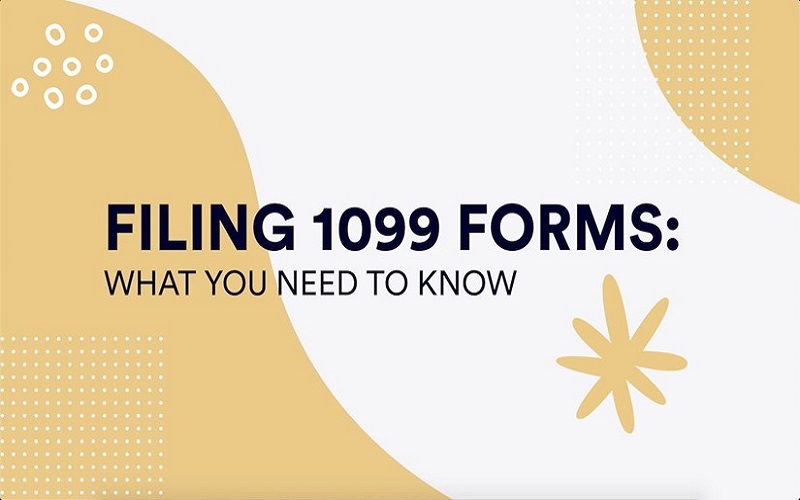If you are a beginner freelancer or independent contractor, you should know all the peculiarities of working with official documents. Among them, the most important are 1099s. Read more about what these forms are below.
6 Main Things to Know About 1099s
1099 forms are the main documents in the interaction between payers, payees, and the IRS. The tax service issues several types of these forms, designed for various situations. Depending on the size of your business, you might need to know how to use all of them.
What are 1099s?
Forms 1099s are a large group of documents issued by the IRS called information returns. They are used to ensure that small business owners (freelancers, self-employed, contractors, etc.), investors, and gamblers receive written confirmation of transactions, income, tips, and other earnings. These papers, in turn, are used to fill in annual tax returns. That is, payees collect completed 1099s from their payers and use the information from them for filing 1099 taxes for the past tax period. They also make it easier to keep an internal record of income and expenses.
Who gets 1099s?
1099s are required for anyone who is not a formal full-time or part-time employee. That is, if you have income that the IRS qualifies as “non-employee compensations,” you must receive forms in this format from payers. From this point of view, forms 1099 replace the standard W-2s that employers issue to official employees. Also, if you receive income from investments, dividends, interest, local/federal governments, brokerage, and other activities, you need to have the appropriate type of 1099. You, as a payee, should not fill them out but receive them from your payers.
How to get printable forms 1099
You can order the required number of printable 1099 tax forms on the official IRS website. There, you can find all available variations in the latest edition. Tax officials scan incoming physical documents for further processing, so you need a red ink scannable version. You will also find all existing forms in the PDFLiner library.
The wide variety of 1099 forms
The sheer number of 1099 IRS forms can seem overwhelming, especially for a beginner. The IRS created so many types specifically to cover almost any income situation. Fortunately, many of them are highly specialized, and most self-employed people and freelancers use only a few basic types:
- Form 1099-MISC is used when receiving miscellaneous income such as rent, medical compensations, attorney expenses, and other financial transactions. Payers fill it in and send it to payees.
- Form 1099-NEC is completed by those who make payments to non-employees of organizations. The latter include sole proprietors, self-employed, independent contractors, freelancers, etc. This one is filled in and sent by payers, like the previous type.
- Form 1099-INT is issued upon interest payment due to investors from the company’s income. It is usually filled out by banks, governments, or other financial institutions.
- Form 1099-A is used when receiving income from the abandonment or acquisition of secured property. Lenders fill it in and send it to recipients.
- Form 1099-S is issued upon receipt of income from any real estate transactions to obtain money. It can be the sale or exchange of an apartment or house, the difference in the price of which you need to declare. It is filled out by persons closing the transaction, for example, lenders or brokers.
Tip: The lettering after the form number gives you a hint as to which type of income the form is for.
After issuing 1099s, those responsible should send a copy not only to payees but also to the IRS and sometimes, if required, to the State Tax Department. Copies of the finished documents should remain with the payers for internal records.
When are the 1099 IRS forms due?
For most types of this form, the deadline for submission is the same. It is January 31st for the transfer of completed paperwork to payees and February 28th for sending documents to the IRS. Payees should receive their files early in the season as they need to complete their returns and pay 1099 taxes.
The common reason for not receiving 1099 forms
Each situation is very individual, and the reasons might vary. However, among the most frequent versions, the following can be identified:
- Earnings under $600
These forms are designed to record income over $600 for the reporting period. If your source brought in less money, you should not expect your Form 1099.
- It is lost in the mail
Unfortunately, documents can get lost along the way if your payers submit forms in hard copy. Specify the current address or ask the senders to provide you with documents electronically.
- Your business is registered as a corporation
1099 Forms are used in the interactions between self-employed, sole proprietors, single-member LLCs, and their clients (payers). If your business is registered as a corporation, do not wait for Form 1099.
If your situation does not fit the described cases, your payer might have forgotten to submit the required form. Remind them of it or contact the IRS directly.
Final Remarks
Forms in the 1099 series are essential tools for non-employees. They are needed for tax reporting and filling out annual returns. Whether you are a payer or a payee, PDFLiner will help you streamline your workflow in any direction.




